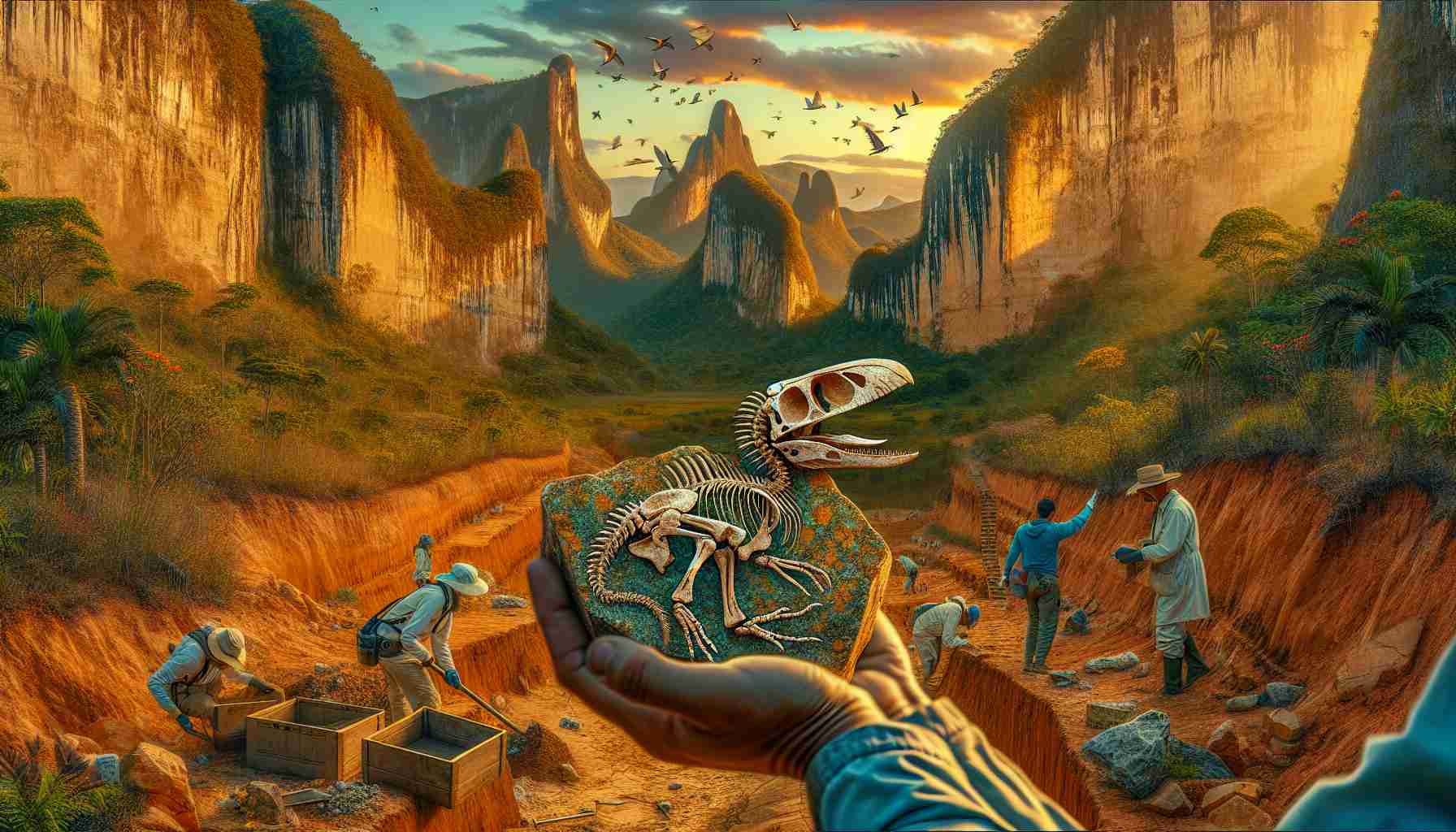A rare and well-preserved fossil was recently unearthed in Brazil, shedding new light on the evolution of ancient birds.
The discovery of a complete 80-million-year-old bird skull marks a significant milestone in paleontological research, providing crucial information about the development of avian species over time. Named Navaornis hestiae in honor of the Brazilian paleontologist William Nava, the fossil represents a key piece in the puzzle of avian evolution.
The bird fossil, which lacks teeth and features large eyes, was found in the Presidente Prudente region of São Paulo, Brazil.
Lead by a team of international researchers, the study uncovered a wealth of details about the anatomy of this primitive bird, bridging the gap between early avian species like Archaeopteryx and modern birds. The structure of the Navaornis skull and brain provides a missing link, offering insights into the evolutionary journey of avian creatures.
The fossil of Navaornis provides valuable insights into the complex evolution of enantiornithine birds, which displayed characteristics of both ancient and modern avian species.
This groundbreaking discovery is poised to revolutionize future studies on enantiornithine birds and avian species from the Mesozoic era. Spearheaded by renowned paleontologists such as Luis Chiappe and Agustín Martinelli, the research team’s findings are set to reshape our understanding of prehistoric avian life.
The research team included experts from various institutions worldwide, contributing to a comprehensive analysis of the fossil’s significance.
As we continue to unveil the mysteries of ancient life forms, each new fossil discovery like Navaornis serves as a gateway to a deeper understanding of the evolutionary processes that shaped the world as we know it today.
New Revelations from the Rare Bird Fossil Unearthed in Brazil
The unprecedented discovery of the Navaornis hestiae fossil in Brazil has provided researchers with fresh insights into the enigmatic world of prehistoric avian evolution. Delving deeper into this groundbreaking find raises essential questions about the implications for our understanding of ancient bird species and their evolutionary journey.
What sets Navaornis apart from previously discovered avian fossils?
The uniqueness of the Navaornis fossil lies in its distinct lack of teeth and its notably large eyes. These features offer a glimpse into the specialized adaptations of this ancient bird, shedding light on its ecological niche and behavioral characteristics.
What challenges do researchers face in interpreting the evolutionary significance of Navaornis?
One of the key challenges associated with studying the Navaornis fossil is deciphering the precise evolutionary relationships it shares with other avian species. Unraveling the complex interplay between primitive and modern traits within enantiornithines like Navaornis requires meticulous analysis and comparison with a wide range of existing avian fossils.
What are the advantages of studying the Navaornis fossil in the context of avian evolution?
By exploring the anatomical features and brain structure of Navaornis, researchers can gain invaluable insights into the transitional stages that paved the way for the diverse array of bird species we see today. This detailed understanding of prehistoric avian evolution enriches our knowledge of the mechanisms driving biological diversity over millions of years.
What debates or controversies surround the interpretation of the Navaornis fossil?
As with any significant paleontological discovery, the interpretation of the Navaornis fossil may spark debates regarding its classification within the broader avian evolutionary tree. Disagreements over the evolutionary relationships of enantiornithine birds like Navaornis could fuel academic discussions on the evolutionary trajectories of avian lineages during the Mesozoic era.
For further exploration of avian evolution and paleontology, National Geographic offers a wealth of resources on prehistoric creatures and the scientific discoveries that continue to reshape our understanding of ancient life forms.














